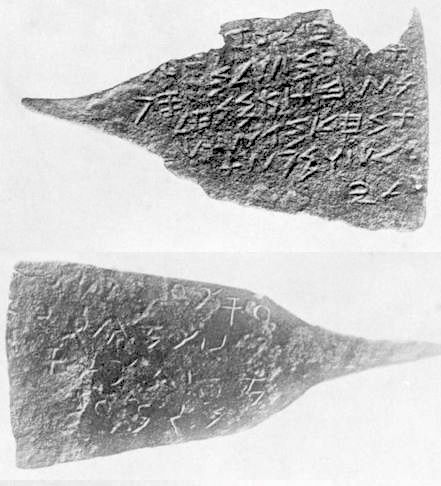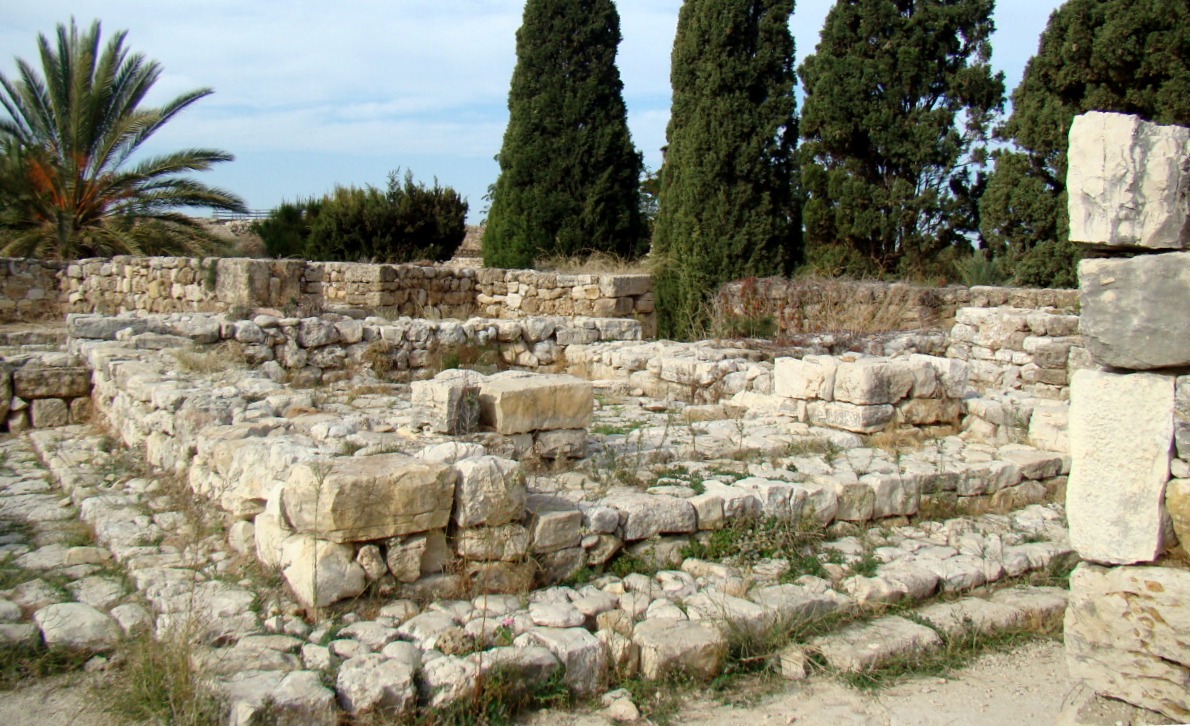|
Abdmiskar Cippus
The Abdmiskar cippus is a white marble cippus in obelisk form discovered in Sidon, Lebanon, dated to 300 BCE. Discovered in 1890 by Joseph-Ange Durighello (son of the discoverer of the Sarcophagus of Eshmunazar II). It contains a two line Phoenician inscription, stating that it represents an "offering made by Abdmiskar, son of Baalsillekh, to his lord Salman." It measures 105cm x 30cm x 30cm. It has been compared to the obelisks in the Temple of the Obelisks in Byblos. Today it is on display at the Louvre The Louvre ( ), or the Louvre Museum ( ), is the world's most-visited museum, and an historic landmark in Paris, France. It is the home of some of the best-known works of art, including the ''Mona Lisa'' and the ''Venus de Milo''. A central l ... (AO 1759 + 1762). The inscription is known as KAI 282, RES 930, or the "fourth Sidonian". Gallery File:Abdmiskar cippus - 200-150 BCE - Sidon (Saïda, Libanon) - Louvre - AO 1759 et AO 1762. - picture 01.jpg, The cippus File ... [...More Info...] [...Related Items...] OR: [Wikipedia] [Google] [Baidu] |
Marble
Marble is a metamorphic rock composed of recrystallized carbonate minerals, most commonly calcite or dolomite. Marble is typically not foliated (layered), although there are exceptions. In geology, the term ''marble'' refers to metamorphosed limestone, but its use in stonemasonry more broadly encompasses unmetamorphosed limestone. Marble is commonly used for sculpture and as a building material. Etymology The word "marble" derives from the Ancient Greek (), from (), "crystalline rock, shining stone", perhaps from the verb (), "to flash, sparkle, gleam"; R. S. P. Beekes has suggested that a " Pre-Greek origin is probable". This stem is also the ancestor of the English word "marmoreal," meaning "marble-like." While the English term "marble" resembles the French , most other European languages (with words like "marmoreal") more closely resemble the original Ancient Greek. Physical origins Marble is a rock resulting from metamorphism of sedimentary carbonate ro ... [...More Info...] [...Related Items...] OR: [Wikipedia] [Google] [Baidu] |
Phoenician Inscription
The Canaanite and Aramaic inscriptions, also known as Northwest Semitic inscriptions, are the primary extra-Biblical source for understanding of the society and history of the ancient Phoenicians, Hebrews and Arameans. Semitic inscriptions may occur on stone slabs, pottery ostraca, ornaments, and range from simple names to full texts. The older inscriptions form a Canaanite–Aramaic dialect continuum, exemplified by writings which scholars have struggled to fit into either category, such as the Stele of Zakkur and the Deir Alla Inscription. The Northwest Semitic languages are a language group that contains the Aramaic language, as well as the Canaanite languages including Phoenician and Hebrew. Languages The old Aramaic period (850 to 612 BC) saw the production and dispersal of inscriptions due to the rise of the Arameans as a major force in Ancient Near East. Their language was adopted as an international language of diplomacy, particularly during the late stages of the Ne ... [...More Info...] [...Related Items...] OR: [Wikipedia] [Google] [Baidu] |
Archaeological Discoveries In Lebanon
Archaeology or archeology is the scientific study of human activity through the recovery and analysis of material culture. The archaeological record consists of Artifact (archaeology), artifacts, architecture, biofact (archaeology), biofacts or ecofacts, archaeological site, sites, and cultural landscapes. Archaeology can be considered both a social science and a branch of the humanities. It is usually considered an independent academic discipline, but may also be classified as part of anthropology (in North America – the four-field approach), history or geography. Archaeologists study human prehistory and history, from the development of the first stone tools at Lomekwi in East Africa 3.3 million years ago up until recent decades. Archaeology is distinct from palaeontology, which is the study of fossil remains. Archaeology is particularly important for learning about prehistoric societies, for which, by definition, there are no written records. Prehistory includes ove ... [...More Info...] [...Related Items...] OR: [Wikipedia] [Google] [Baidu] |
3rd-century BC Artifacts
The 3rd century was the period from 201 ( CCI) to 300 (CCC) Anno Domini (AD) or Common Era (CE) in the Julian calendar.. In this century, the Roman Empire saw a crisis, starting with the assassination of the Roman Emperor Severus Alexander in 235, plunging the empire into a period of economic troubles, barbarian incursions, political upheavals, civil wars, and the split of the Roman Empire through the Gallic Empire in the west and the Palmyrene Empire in the east, which all together threatened to destroy the Roman Empire in its entirety, but the reconquests of the seceded territories by Emperor Aurelian and the stabilization period under Emperor Diocletian due to the administrative strengthening of the empire caused an end to the crisis by 284. This crisis would also mark the beginning of Late Antiquity. In Persia, the Parthian Empire was succeeded by the Sassanid Empire in 224 after Ardashir I defeated and killed Artabanus V during the Battle of Hormozdgan. The Sassanids th ... [...More Info...] [...Related Items...] OR: [Wikipedia] [Google] [Baidu] |
Funerary Steles
A funeral is a ceremony connected with the final disposition of a corpse, such as a burial or cremation, with the attendant observances. Funerary customs comprise the complex of beliefs and practices used by a culture to remember and respect the dead, from interment, to various monuments, prayers, and rituals undertaken in their honor. Customs vary between cultures and religious groups. Funerals have both normative and legal components. Common secular motivations for funerals include mourning the deceased, celebrating their life, and offering support and sympathy to the bereaved; additionally, funerals may have religious aspects that are intended to help the soul of the deceased reach the afterlife, resurrection or reincarnation. The funeral usually includes a ritual through which the corpse receives a final disposition. Depending on culture and religion, these can involve either the destruction of the body (for example, by cremation or sky burial) or its preservation (for examp ... [...More Info...] [...Related Items...] OR: [Wikipedia] [Google] [Baidu] |
Phoenician Steles
Phoenician may refer to: * Phoenicia, an ancient civilization * Phoenician alphabet ::Phoenician (Unicode block) * Phoenicianism, a form of Lebanese nationalism * Phoenician language * List of Phoenician cities * Phoenix, Arizona See also * Phoenix (mythology) * Phoenix (other) * Phoenicia (other) Phoenicia was an ancient civilization in the north of Canaan in parts of Lebanon, Syria, and Palestine. Phoenicia may also refer to: Historical places *Phoenice (Roman province), a province of the Roman Empire encompassing the region of Phoenici ... * {{disambiguation Language and nationality disambiguation pages ... [...More Info...] [...Related Items...] OR: [Wikipedia] [Google] [Baidu] |
Near Eastern And Middle Eastern Antiquities In The Louvre
NEAR or Near may refer to: People * Thomas J. Near, US evolutionary ichthyologist * Near, a developer who created the higan emulator Science, mathematics, technology, biology, and medicine * National Emergency Alarm Repeater (NEAR), a former alarm device to warn civilians of a foreign nuclear attack on the United States * National Emergency Airway Registry (NEAR), a patient registry for intubations in the United States * Nicking enzyme amplification reaction (NEAR), a method of DNA amplification * NEAR Shoemaker, a spacecraft that studied the near-Earth asteroid Eros * Nearness or proximity space *"Near", a city browser by NearGlobal Television, film, music, and books * Near (Death Note), ''Nate River'', a character Other uses * Near v. Minnesota, a U.S. press freedom Supreme Court decision * New England Auto Racers Hall of Fame The New England Auto Racers Hall of Fame is a hall of fame for racing-related people in the New England region of the United States. NEAR was ... [...More Info...] [...Related Items...] OR: [Wikipedia] [Google] [Baidu] |
Ancient Lebanon
The history of ancient Lebanon traces the course of events related to the geographic area in the Eastern Mediterranean of what is now known as Lebanon from the beginning of antiquity to the beginning of Arab rule. Prehistoric times The earliest known settlements in Lebanon date back to earlier than 5000 BC. In Byblos, which is considered to be the oldest continuously inhabited city in the world, archaeologists have discovered remnants of prehistoric huts with crushed limestone floors, primitive weapons, and burial jars which are evidence of the Neolithic and Chalcolithic fishing communities who lived on the shore of the Mediterranean Sea over 8,000 years ago. Ancient Near East Bronze Age The area was first recorded in history around 4000 BC as a group of coastal cities and a heavily forested hinterland. It was inhabited by the Canaanites, a Semitic people, whom the Greeks called "Phoenicians" because of the purple (phoinikies) dye they sold. These early inhabitants refe ... [...More Info...] [...Related Items...] OR: [Wikipedia] [Google] [Baidu] |
Phoenician Inscriptions
The Canaanite and Aramaic inscriptions, also known as Northwest Semitic inscriptions, are the primary extra-Biblical source for understanding of the society and history of the ancient Phoenicians, Hebrews and Arameans. Semitic inscriptions may occur on stone slabs, pottery ostraca, ornaments, and range from simple names to full texts. The older inscriptions form a Canaanite–Aramaic dialect continuum, exemplified by writings which scholars have struggled to fit into either category, such as the Stele of Zakkur and the Deir Alla Inscription. The Northwest Semitic languages are a language group that contains the Aramaic language, as well as the Canaanite languages including Phoenician and Hebrew. Languages The old Aramaic period (850 to 612 BC) saw the production and dispersal of inscriptions due to the rise of the Arameans as a major force in Ancient Near East. Their language was adopted as an international language of diplomacy, particularly during the late stages of the Ne ... [...More Info...] [...Related Items...] OR: [Wikipedia] [Google] [Baidu] |
Temple Of The Obelisks
The Temple of the Obelisks (french: Temple aux Obelisques, ar, معبد الأنصاب ''maebad al'ansab''), also known as the L-shaped Temple and Temple of Resheph was an important Bronze Age temple structure in the World Heritage Site of Byblos. It is considered "perhaps the most spectacular" of the ancient structures of Byblos. It is the best preserved building in the Byblos archaeological site. Almost all of the artefacts found in the excavation of the temple are displayed at the National Museum of Beirut. It was excavated by French archaeologist Maurice Dunand from 1924-73. The original temple is now in two parts: the base is known as "the L-shaped temple", and the top is known as the "Temple of the Obelisks"; the latter was moved 40 meters east during Maurice Dunand's excavations. Dunand uncovered 1306 Byblos figurines – ex-voto offerings, including faience figurines, weapons, and dozens of bronze-with-gold-leaf figurines – which have become the "poster child" of the ... [...More Info...] [...Related Items...] OR: [Wikipedia] [Google] [Baidu] |
Sarcophagus Of Eshmunazar II
The sarcophagus of Eshmunazar II is a 6th-century BC sarcophagus unearthed in 1855 in the grounds of an ancient necropolis southeast of the city of Sidon, in modern-day Lebanon, that contained the body of Eshmunazar II (Phoenician language, Phoenician: , ), Phoenician King of Sidon. One of only three Ancient Egyptian sarcophagi found outside Egypt, with the other two belonging to Eshmunazar's father King Tabnit and to a woman, possibly Eshmunazar's mother Queen Amoashtart, it was likely carved in Ancient Egypt, Egypt from local amphibolite, and captured as booty by the Sidonians during their participation in Cambyses II's First Achaemenid conquest of Egypt, conquest of Egypt in 525 BC. The sarcophagus has two sets of Canaanite and Aramaic inscriptions, Phoenician inscriptions, one on its lid and a partial copy of it on the sarcophagus trough, around the curvature of the head. The lid inscription was of great significance upon its discovery as it was the first Phoenician language ... [...More Info...] [...Related Items...] OR: [Wikipedia] [Google] [Baidu] |


.jpg)


_19.jpg)

